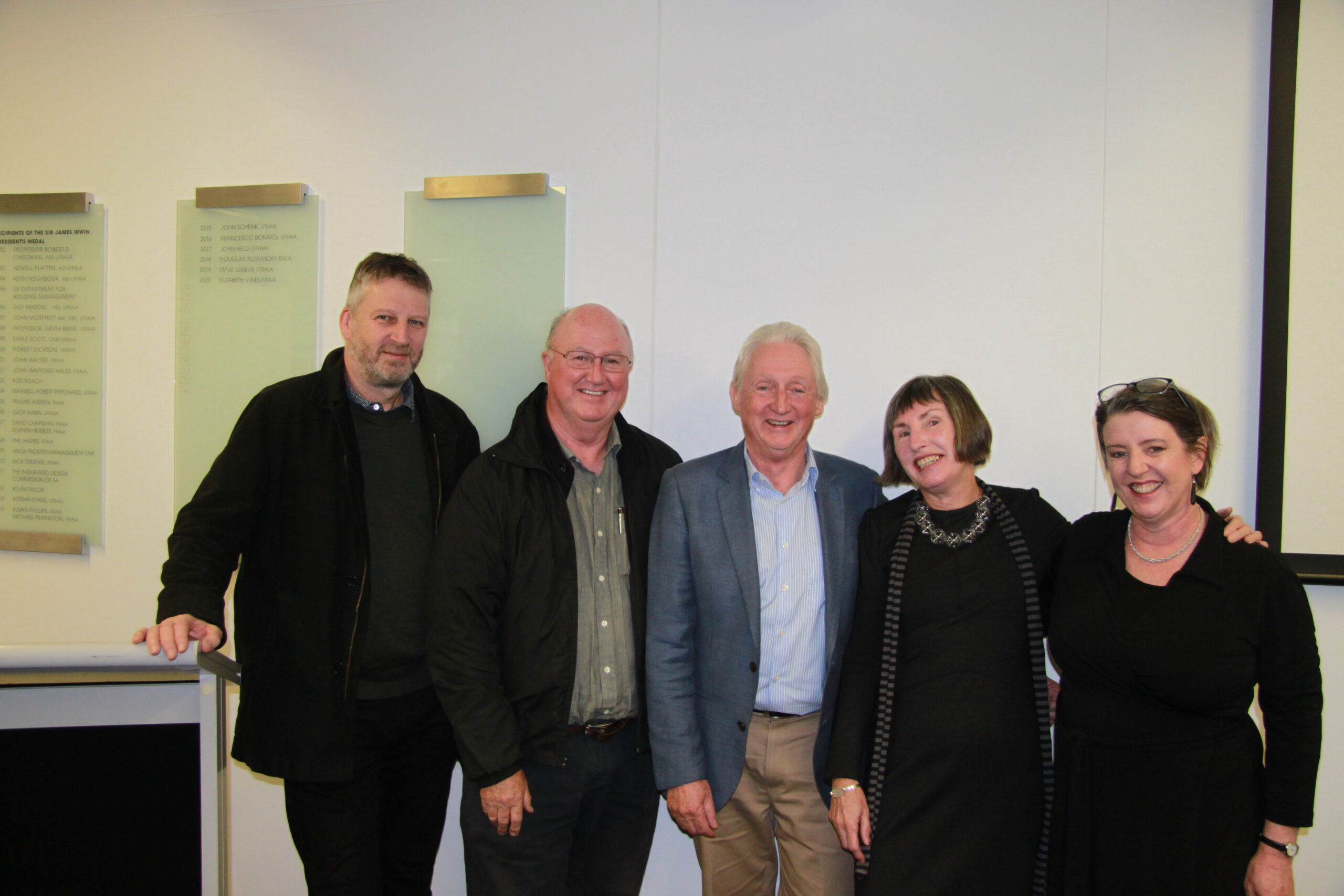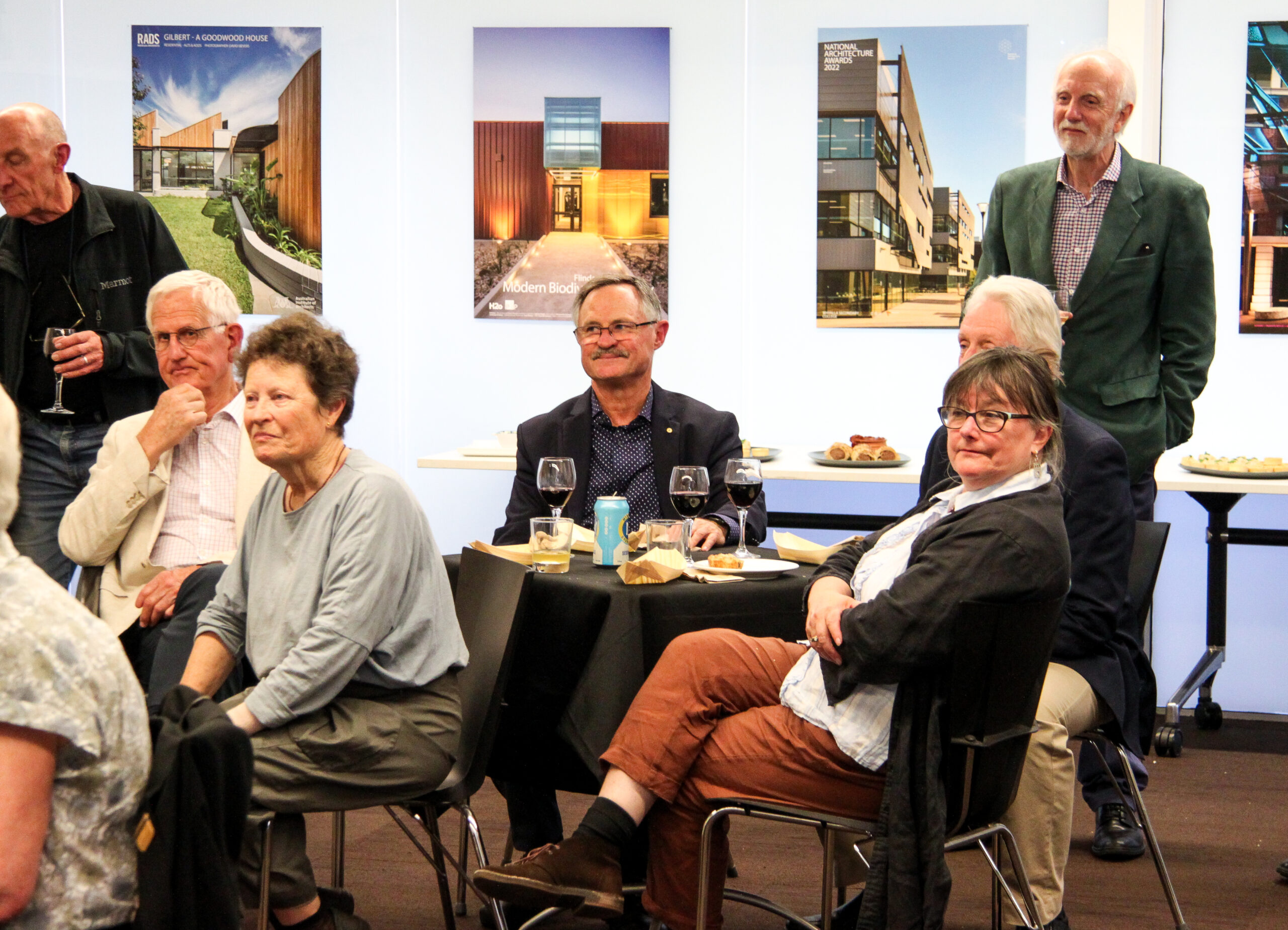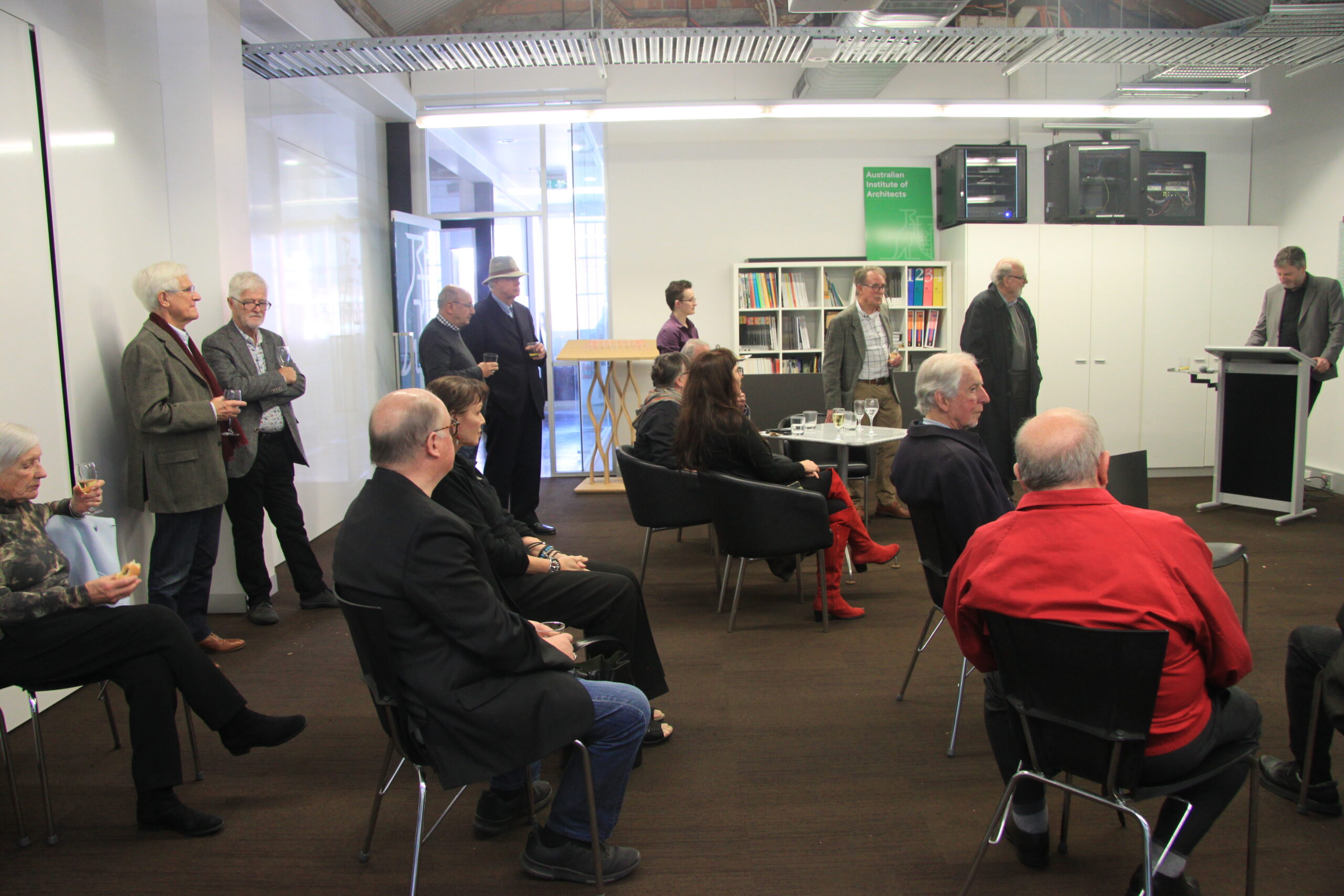SA Fellows &
Life Fellows
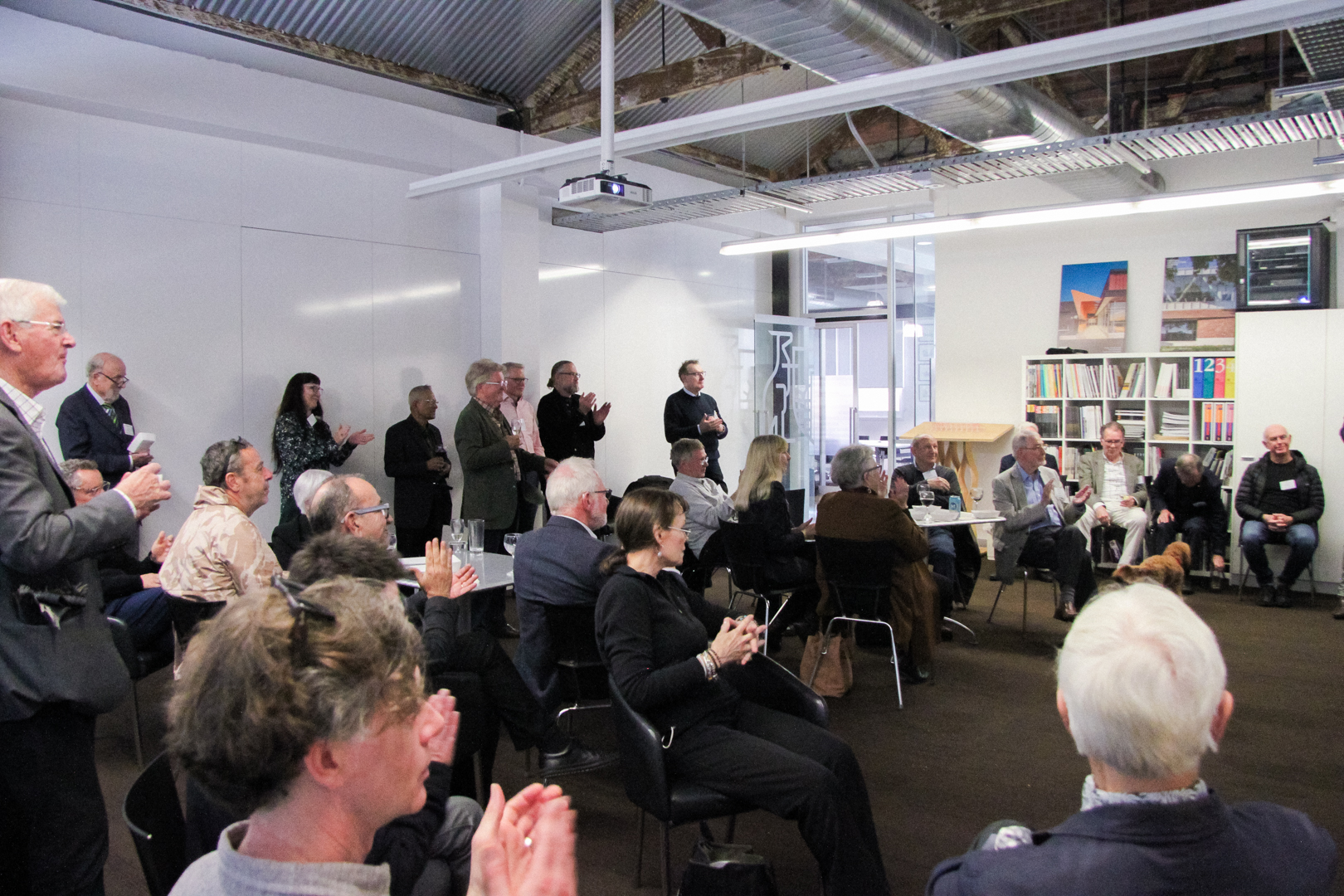
Honours
Life Fellows & Fellows
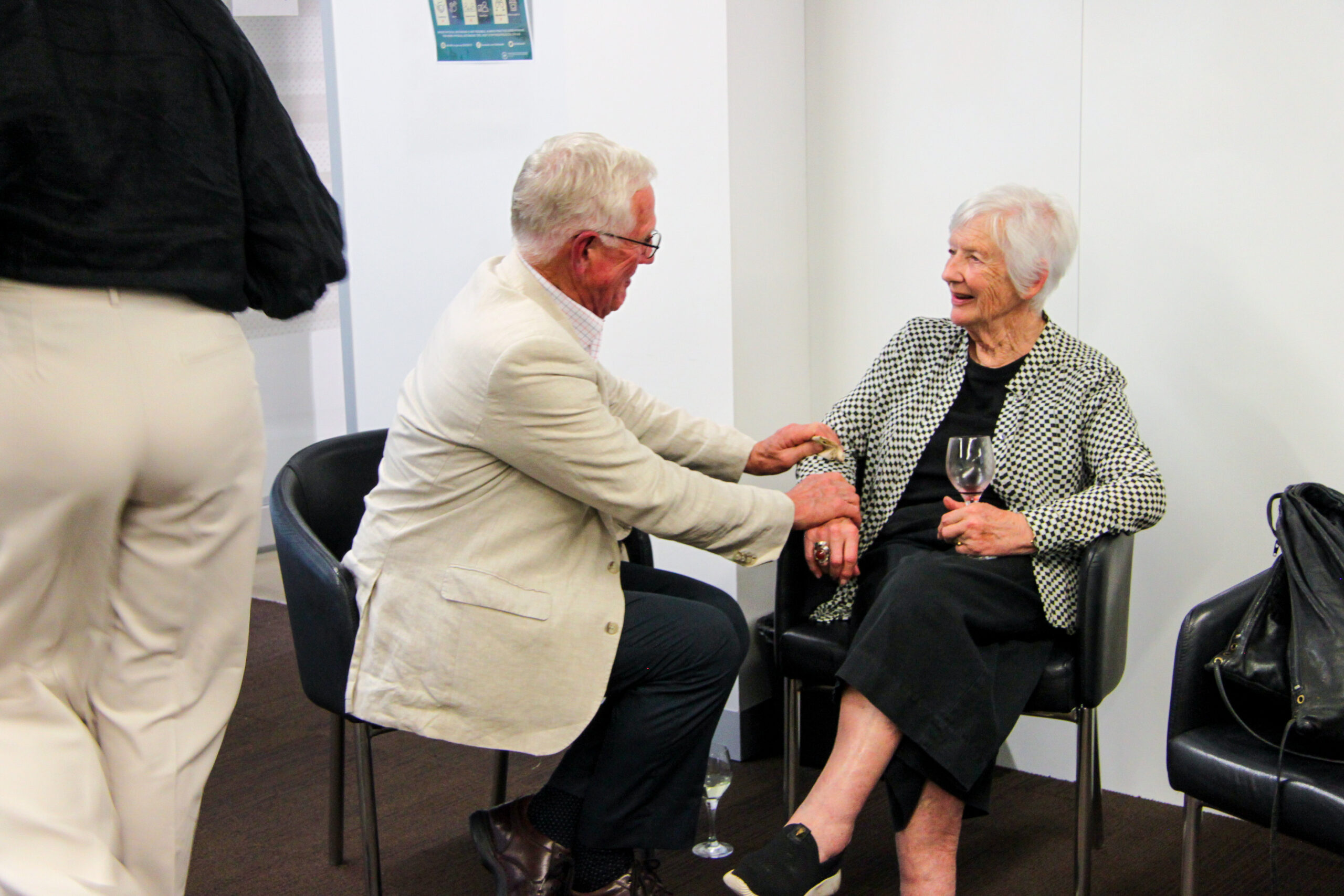
Life Fellowship is awarded to members who is a Fellow of the Institute and who, in the opinion of the National Council, has rendered notable contribution to the advancement of the profession in design, construction, literature, education, public service or in any other way deemed worthy of the honour of Life Fellowship. Life Fellow is the highest honour class of RAIA membership available to members practising architecture.
Fellowship is awarded to those who have demonstrated a significant contribution to the architecture profession beyond architecture practice. Each nomination requires the endorsement of two voting members and the Chapter Council.
On this page
2023 Life Fellows
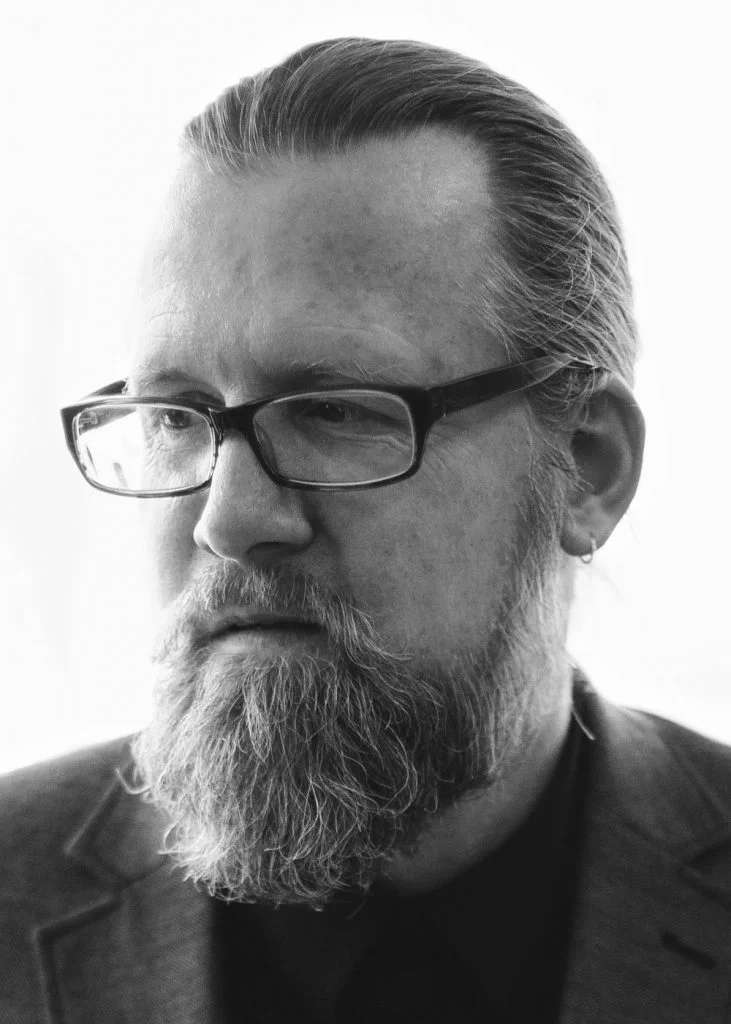
PAUL BOYCE
Paul Boyce graduated from the University of Adelaide in 1986 and attained registration as an architect in South Australia and Victoria.
He joined Tridente Architects (now Tridente Boyce) in the 1990s, and through his practice has demonstrated exceptional work in master planning, urban design, and through architectural design excellence.
Paul’s experience spans the globe – having worked in Adelaide, Melbourne and London – and the full range of architectural disciplines, from design, design development, documentation through to contract administration and associated post- contract services.
The quality of his work is reflected in numerous awards and commendations from the Institute, the Australian Steel Institute, Good Design Australia and more. A major sector of Paul’s work has been in education to the lasting benefit of schools, students, and educators through the design of educational facilities.
Outside of his practice, Paul has been an invaluable member and Chair of the Architectural Practice Board of SA for over 20 years. As convener and lead examiner he has been instrumental in the establishment of a strong, resilient and lasting examination process for the registration of architects. He has also served the Architects Accreditation Council of Australia as a board member, Director, PASA Assessor and APEC Architect Assessor. His efforts to support the registration of architects cannot be overstated.
Paul has also made significant contribution to architectural education as a tutor and lecturer at the University of Adelaide, and as a member of the Architectural Education Committee of the
Australian Institute of Architects. He has been generous with his expertise as a mentor for the SA Chapter Mentoring Program and the PALS Program, and as Deputy Chair of the University of Adelaide School of Architecture and Built Environment Professional Advisory Board.
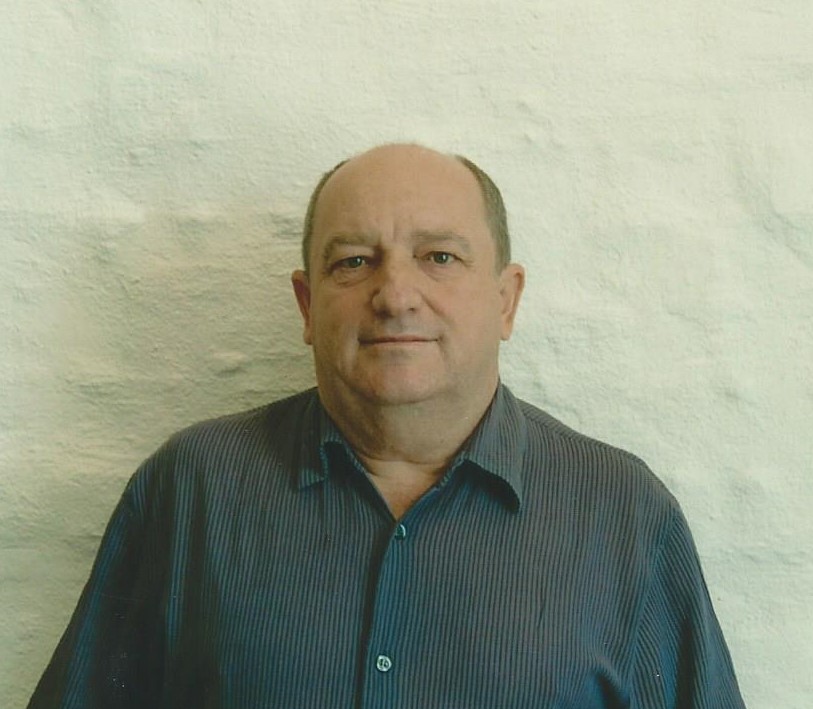
Val Mohyla
Valery Mohyla has always considered his greatest achievement was his ability and
opportunity to contribute to the built environment to make it a better place in
which to live, work and play. Throughout a career spanning over 55 years, he has
endeavoured to consider the broader context: how the ‘footprints’ that architecture creates serve people, the environment and society.
Val’s ability to embrace people and form lasting friendships has been a key driver in his life. It has provided him with opportunities to work throughout the world, assisted him in developing long term client relationships and allowed him to work on a wide range of projects across different typologies and scales.
He has worked in Australia, Fiji, the USA, the UK, Hong Kong, the Philippines, Thailand, Brunei, and more recently, China.
For the past 50 years he has been Principal and Partner of Mohyla Architects Interior Designers (formerly Val Mohyla Architects), based out of Adelaide and Hong Kong.
Val regularly mentors staff to take active roles across all aspects of the practice, often guiding and seeking out their involvement and collaboration with recognised design and industry professionals, both local and interstate, as well as internationally.
He has also lectured in professional practice, construction, and design at the Department of Architecture, University of Adelaide (1991 – 1994) and the School of Architecture, University of South Australia (1984 – 1994).
Val joined the Institute in 1976 and was elevated to Fellow in 1984. He has actively participated in the SA Chapter through involvement on the RAIA SA Chapter Information Committee and Practice Committee during the early 1970s. In 1985 Val was an inaugural Member of the Architecture Week Committee.
Other professional involvement includes being a Member of Consult Australia
(Australian Professional Consultants Council) (1987 – 1992), and a Member/Chair of the American Chamber of Commerce Government Liaison Committee (1988 – 1990).

...
…
2021 Life Fellows
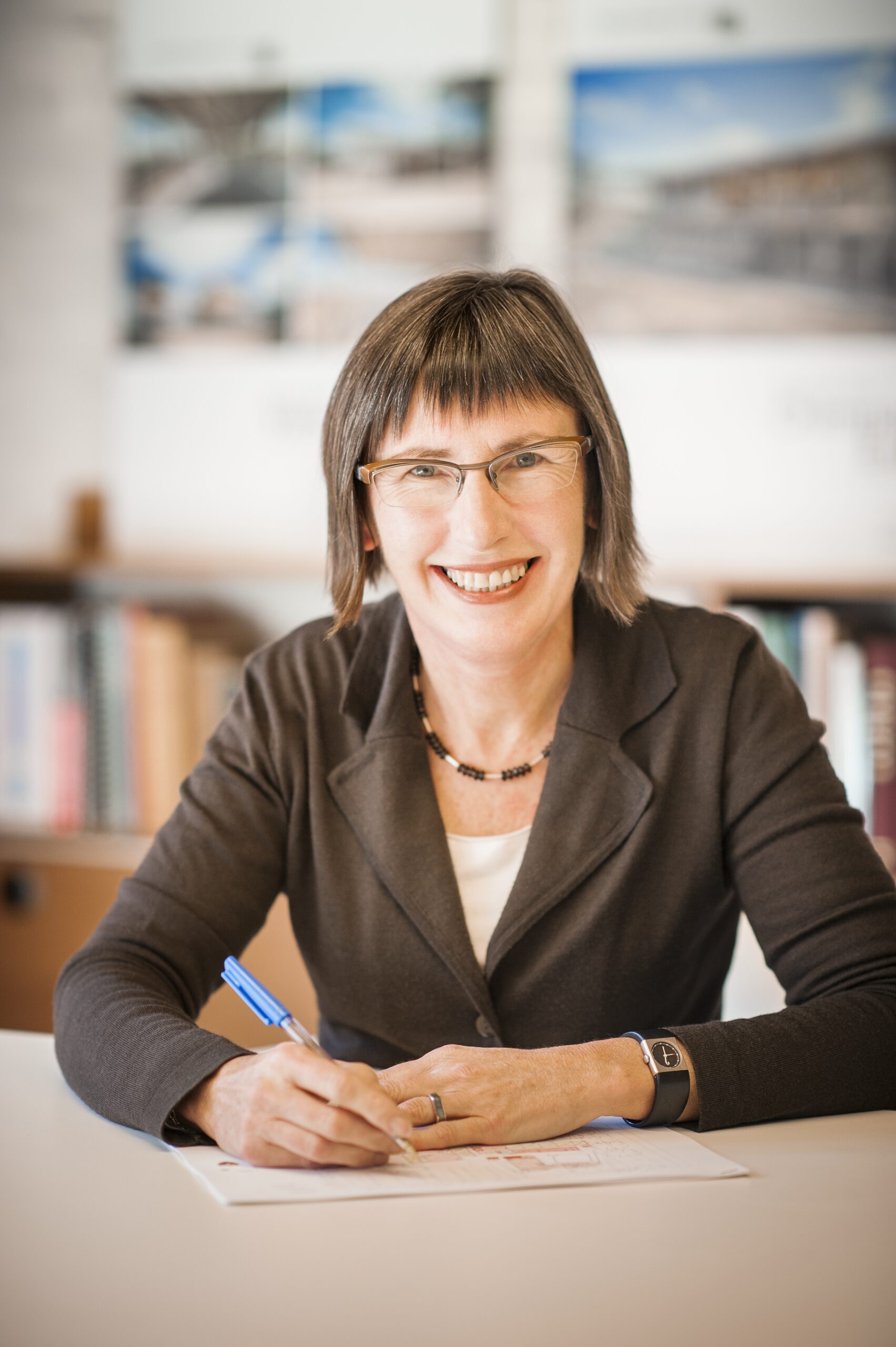
Susan Phillips
Susan (Sue) Phillips is a founding partner of Phillips/Pilkington Architects and has been Director in charge of many of the practice’s award winning buildings, including Seymour College Performing Arts Centre, Woodcroft College Administration Building, Wilderness School Hall and Monarto Zoological Park Visitor’s Centre. Sue has worked extensively on community and cultural projects, including Performing Arts Facilities, Galleries, Libraries and Community Meeting Spaces. She has a passionate commitment to Environmental Design, as evidenced by the Environmental Awards received for the Practice’s work.
Sue has extensive community engagement experience and has prepared many Master Plans. She maintains a key involvement in all stages of a project’s development and is committed to achieving design excellence within strict budget and program constraints. Following graduation Sue worked in Adelaide, prior to gaining employment with Mitchell, Giurgola & Thorpe on the National Parliament House project. The opportunity to work closely with Aldo Giurgola and Pamille Berg and on such a significant project so early in her career was formative.
Giurgola’s influence was significant, demonstrating the importance of collaborative practice not only with other architects and designers but also artists. This experience is evident in the work of the practice of Phillips/Pilkington that she established with her partner Michael in 1992. Giurgola’s influence has continued to inform their work through their attention to detail, sensible use of materials and the inclusion of artists in their projects.
In addition to collaborative practice, Phillips/Pilkington place particular importance in developing and enhancing the sense of cultural identity within their projects. They have a strong commitment to environmental responsibility which further reinforces sense of place by responding to local climatic conditions. While their projects are sophisticated, their architecture is accessible, down to earth and tangible.
In addition to practice, Sue has contributed to the profession through her active engagement in various professional bodies, including the Institute, where she has served as an awards juror at state and national level, and been an active participant in numerous projects.
She served for 10 years as a member of the Architectural Practice Board of South Australia and has been a member of the ACA’s SA committee since 2013.
Sue is also an active member of Parlour. As a female director of an architectural practice, Susan has also been a role model for women within South Australian practice, and has provided inspiration and advice to many. Sue has authored two articles regarding her experience as a woman in the profession and has spoken for Parlour and the Institute on the subject or gender equity.
Sue’s other significant area of contribution outside practice is her involvement in design review and advisory panels for local councils, state government authorities and private organisations. Her ability to analyse and articulate design objectives are key strengths.
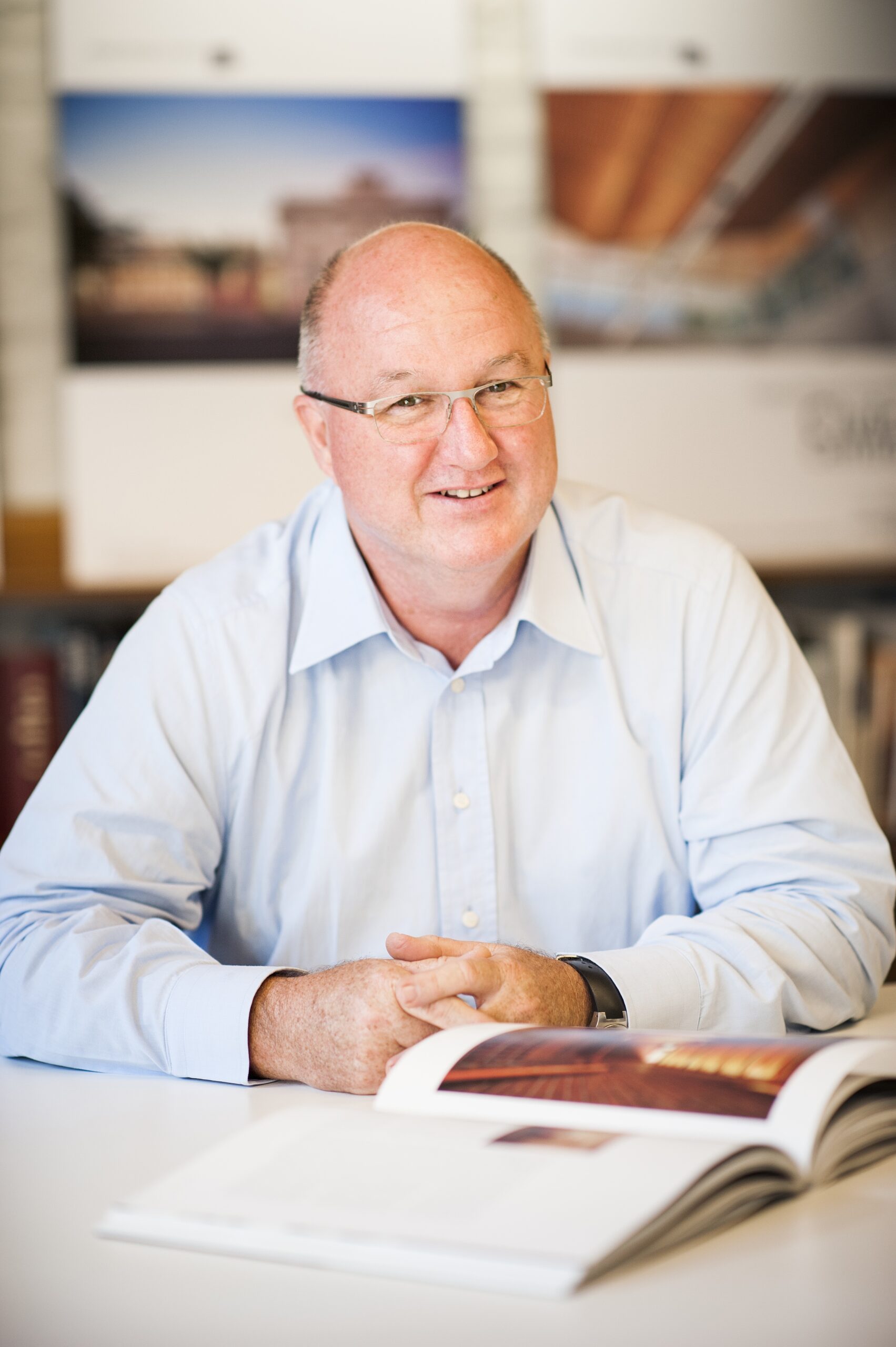
Michael Pilkington
Michael Pilkington is highly respected for making significant contributions to South Australian architecture through exemplary design practice, extensive teaching, community involvement and Institute of architecture activities.
Michael Pilkington is a founding partner of Phillips/Pilkington Architects which was established in 1992 with Susan Phillips. He is Director in charge of many of the practice’s award winning projects including the $20m Plant Accelerator at the Waite Campus of the University of Adelaide, and the Marion Cultural Centre. Michael worked closely with large building companies on these projects: Hansen and Yuncken for the Marion Cultural Centre and Built Environs for the Waite Plant Accelerator.
Michael has been involved in all the education projects undertaken by Phillips/Pilkington Architects and was the responsible Director for the Pilgrim School Specialist Classrooms, St Joseph’s Hectorville Multipurpose Hall, all stages of Lutheran School at Blackwood, St Peters Girls Administration Building and Pre-School.
Michael is committed to design excellence carried through construction detailing and in built realisation. Michael was awarded the Sir James Irwin AIA (SA Chapter) Presidents Medal with fellow director Susan Phillips in 2014.
Over the 27 years of the practice they have received major design awards for over 30 projects, demonstrating the commitment to design excellence, collaborative practice, respect for heritage, environmentally sustainable design and community engagement.
Michael is an articulate advocate for the importance of design and architecture in our community. He has also been engaged in architectural education in the Schools of Architecture at the University of Adelaide and UniSA over many years.
Michael is a passionate advocate for heritage, particularly in relation to 20th century architecture. He has publicly championed the merit of modern and contemporary architecture and been involved in the listing applications for buildings including the Australian Bureau of Meteorology at Kent Town, the Salisbury Civic Centre, the Australian Eagle Insurance Building and the Marion Cultural Centre.
Michael has also the driving force behind the Dickson & Platten Architects 1950-2000 exhibition and the associated catalogue (2017) and the 20th Century Adelaide exhibition (2019). Both exhibitions have acted as a catalyst for increased awareness of 20th century architecture in South Australia, the context and impact at the time and its value to the community now.
In addition to this Michael has been involved in Institute activities over many years, including being on the SA Chapter Council participation as a juror in the SA awards program and organising the Design Conversations series in the 1990s.
LIST OF SA FELLOWS & LIFE FELLOWS
LIST OF SOUTH AUSTRALIAN FELLOWS & LIFE FELLOWS
A list SA based Life Fellows*
*Lists may be incomplete due to missing records
2023 Life Fellows
- Paul Boyce
- Val Mohyla
2021 Life Fellows
- Susan Phillips
- Michael Pilkington
2020 Life Fellows
- Phil Harris
2019 Life Fellows
- Ian Halliday
- Steve Grieve
2017 Life Fellows
- Denis Harrison
- John Held
- Brian Snowden
- Nick Tridente
- Carolyn Wigg
2016 Life Fellows
- Kenneth Milne
- Lolita Mohyla
2015 Life Fellows
- John Walter
- John Maitland
2012 Life Fellows
- Andrew Davies
- Elaine Davies
2010 Life Fellows
- Michael Llewellyn-Smith
2009 Life Fellows
- Francesco Bonato
2006 Life Fellows
- Mary Marsland
- Max Pritchard
2005 Life Fellows
- Peter Dungey
2002 Life Fellows
- Ronald Danvers
- Geoffrey Nairn
2001 Life Fellows
- Judith Brine
- Adrian Evans
- David Hassell
1998 Life Fellows
- Lu Balsamo
1994 Life Fellows
- Robert Cheesman
1990 Life Fellows
- John Cooper
- Guy Maron
1980 Life Fellows
- David Gilbert
A list of all SA based Fellows*
*Lists may be incomplete due to missing records
2024 Fellows
- Josephine Evans
- Yaara Plaves
2023 Fellows
- Simon Frost
- Chris Watkins
- Mariano De Duonni
2022 Fellows
- Anthony Balsamo
- Mark Berlangieri
- Kirstie Coultas
- David Homburg
- Libby Warwick
2021 Fellows
- David Kilpatrick
- Richard Woods
2020 Fellows
- Anthony Coupe
- Nicolette Di Lernia
- James Hayter
- Dario Salvatore
- Felicity Sando
- Norman Sheun
2019 Fellows
- Danielle O’Dea
- Graham Fowlie
- Sean Humphries
- Rachel Hurst
- Nigel Miller
- David Morris
- James Sage
- Peter Petrou
- Marino Rossi
- Simon Thomson
2017 Fellows
- Simon Best
- Sally Bolton
- Pippa Buckberry
- Sarah Paddick
2016 Fellows
- David Ey
- Tony Zappia
- John Galluccio
- Tony Materne
- Carlo Pennino
2015 Fellows
- Susan Phillips
- Michael Pilkington
- Mads Gaardboe
FELLOWSHIP APPLICATION
Advancement to fellowship
Criteria for elevation
- A minimum of 12 years as a Voting Member (Chapter Councils may consider a lesser period of membership as a special case);
- Evidence of a significant contribution to the profession; and
- Recommendation and endorsement of reasons for elevation by two Voting Members. In the case of overseas members, two short references of no more than 500 words, written by Voting Members of the Institute, must also accompany the application.
Guidance notes for the applicant
Fellowship is to recognise a level of achievement within the architectural profession. Therefore it applies similarly to generalists, specialists, academics, project managers and administrators.
Fellowship should be regarded as a privilege, not a right.
Chapters have some latitude in their interpretation of the contribution criteria of the submission; however they should ensure that sufficient i nformation i s provided to demonstrate that the intent of Fellowship is satisfied.
To demonstrate their significant contribution to the profession candidates should provide the following supporting information:
a) Gaining of Significant Experience in the Practice of Architecture
For broad experience the candidate should supply a C.V. indicating employment, types of projects and their professional role to demonstrate their experience across the full range of architectural activity. For specialist experience, the C.V. should indicate their expertise in any area of architecture activity.
b) Significant Service to the Profession or Community
The candidate should supply details of their service to the community and profession through participation in organisations or groups such as the Institute, AACA, government, schools, community, other professional bodies, media, church etc. or through any other method. All details of service are of assistance to Chapter Council in assessing an application for elevation.
* These notes are provided for guidance only. This policy is subject to change; please refer to the current Policy Book available at your local Chapter Office.
Life Fellowship Nomination
Criteria for Elevation to Life Fellowship
Life Fellowship can be awarded to members who is a Fellow of the Institute and who, in the opinion of the National Council, has rendered notable contribution to the advancement of the profession in design, construction, literature, education, public service or in any other way deemed worthy of the honour of Life Fellowship.
“Notable contribution” is defined as being a contribution above and beyond the normal contribution made by an architect in the course of their professional career, eg. a record of long or high service in a professional or industry association; a long and sustained record of recognised excellent works or public service, or similar achievement in the fields of building technology, literature or education.
Guidance Notes for Submission of Nominations for Life Fellowship
Article 3 of the Articles of Association of the Institute reads as follows:
Article 3. Life Fellows – The National Council shall have power to confer Life Fellowship upon an architect who is a Fellow of the Institute and who in the opinion of the Council has rendered notable contribution to the advancement of the profession in design, construction, literature, education, public service or in any other way deemed worthy of the honour of Life Fellowship.
- All Corporate members of the Institute are eligible to make nominations.
- Nominations shall be in the name of a Proposer, who will be personally responsible for collating and submitting all relevant information together with a citation.
- Nominations shall be submitted to the Chapter of which the nominee is a member (or, if not a member of a Chapter, to the Secretary of the RAIA).
- Chapter Councils shall be responsible for checking that nominations are adequately prepared in accordance with these notes before onward transmission to National Council. They shall also be responsible to append their endorsement, or otherwise, of nominations, but shall not withhold from National Council any nomination on the grounds that it is not endorsed.

